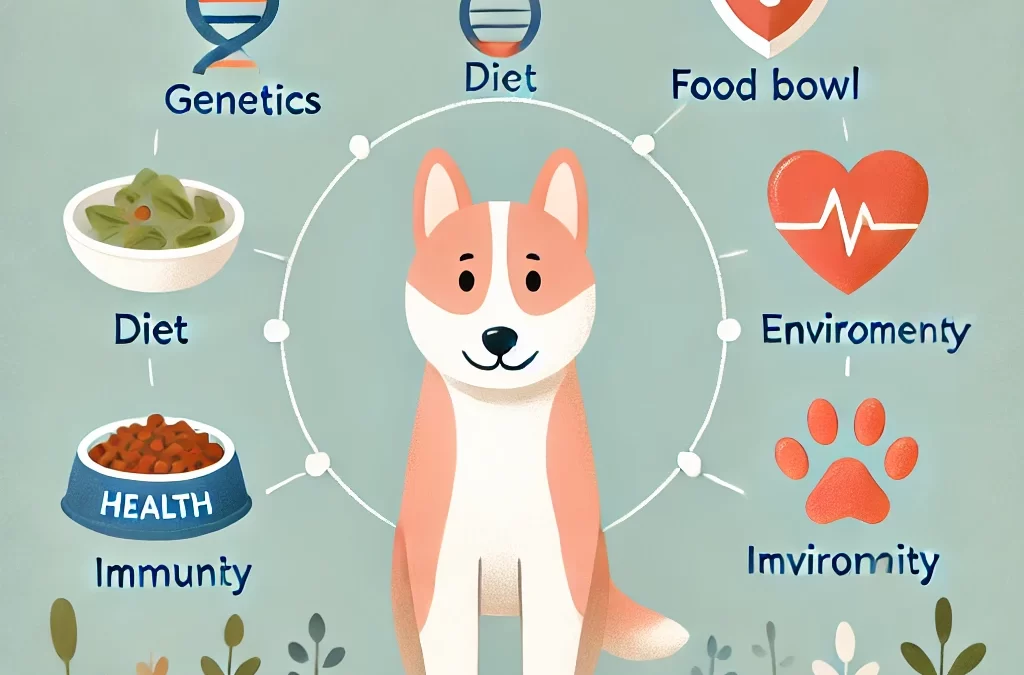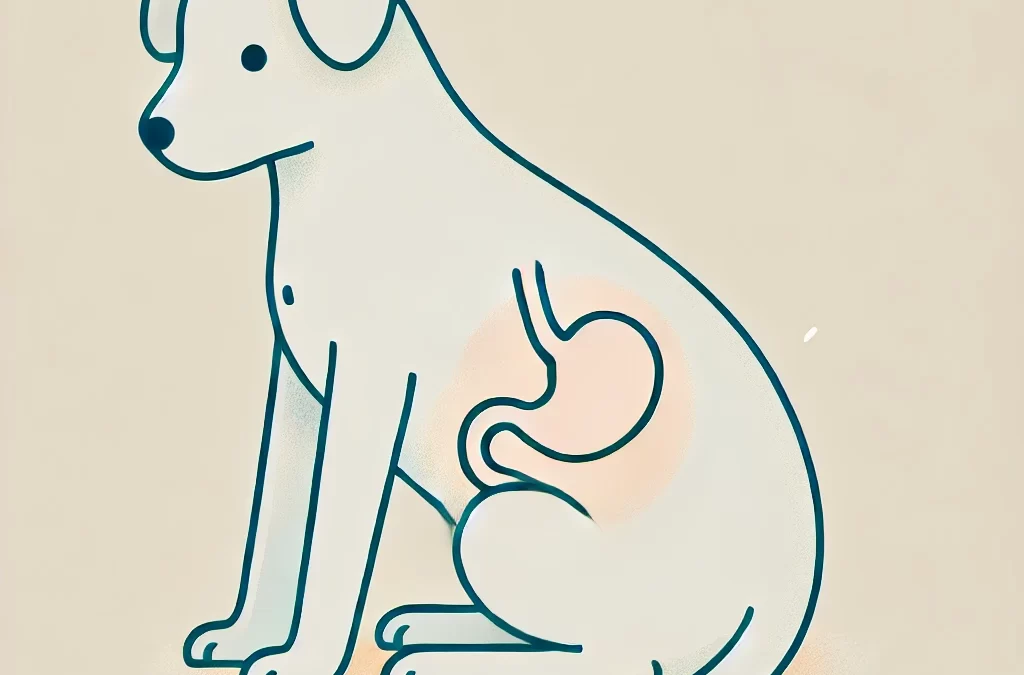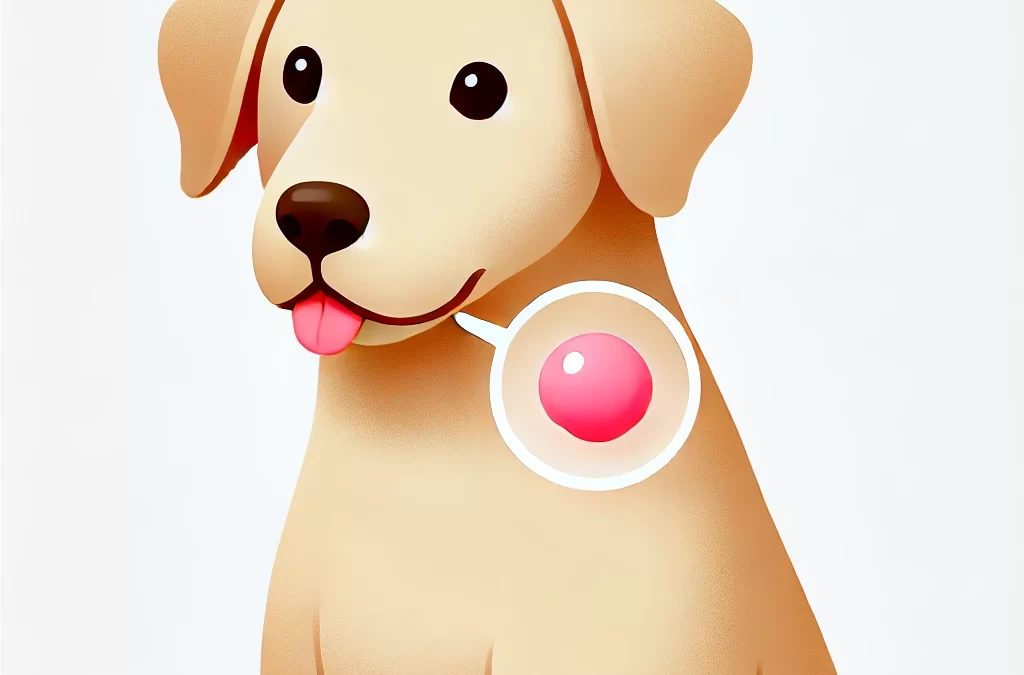
에 의해 TCMVET | 2024년 11월 13일 | 개 암 및 종양
Fatty lumps, or lipomas, are one of the most common non-cancerous growths in dogs, particularly as they age. Pet owners often feel a sense of alarm when they discover these lumps, but most lipomas are benign. In this article, we’ll explore what these lumps feel like, how to distinguish them from other growths, and tips on when to consult a veterinarian.
1. What Are Fatty Lumps?
- Definition of Lipomas: Lipomas are soft, fatty deposits that form under the skin, usually in older or overweight dogs.
- Common Locations: Typically found on the torso, armpits, and limbs but can appear in various locations.
- Cause: Though exact causes aren’t fully known, they may be linked to age, breed, genetics, and weight.
2. The Feel of Fatty Lumps:
- Soft and Movable: Lipomas are generally soft and slightly squishy, feeling somewhat like a lump of dough under the skin. They’re easy to move with a gentle push, which often differentiates them from harder, less mobile growths.
- Not Painful: Unlike cysts or abscesses, lipomas are not painful unless they press on a nerve or joint.
- Consistent Texture: Lipomas usually feel the same throughout, with a homogenous, doughy texture.
3. Differences Between Lipomas and Other Types of Lumps:
- Cysts: Often firmer, cysts can be fluid-filled and sometimes have a central punctum, unlike the uniformity of a lipoma.
- 농양: These are usually painful and feel warm to the touch, often accompanied by redness.
- 암성 성장: Malignant lumps can feel harder, are often fixed in place, and can grow quickly or irregularly. Tumors might feel irregular in shape or firm.
- 섬유종: These benign tumors feel firmer than lipomas and are less mobile but are usually harmless.
4. When Should You Worry?
- Growth Rate: If a lump grows quickly, changes shape, or becomes painful, it’s best to consult a vet immediately.
- Location Concerns: Lumps near joints or in areas that affect mobility may require removal or monitoring.
- Multiple Lumps: Multiple lipomas are common in some breeds, but if new lumps appear rapidly, consider a veterinary check.
5. Diagnosing Lipomas:
- 수의학 시험: A vet can confirm if a lump is a lipoma through palpation.
- 미세 바늘 흡인(FNA): For a more definitive diagnosis, FNA can collect cells from the lump for analysis, providing clarity on whether the lump is benign or requires further investigation.
6. Should Lipomas Be Removed?
- When Surgery is Needed: Generally, lipomas are left alone unless they cause discomfort, restrict movement, or grow excessively.
- Minimally Invasive Options: Newer methods, like liposuction or steroid injections, may help reduce lipomas in some cases.
7. Prevention and Health Tips for Reducing Lipomas:
- 건강한 체중 유지: Obesity is a known risk factor for lipomas.
- 정기검진: Regular vet visits allow for early detection and monitoring of any new growths.
- Balanced Diet and Exercise: A balanced diet and consistent exercise can help prevent obesity, which may reduce the likelihood of lipomas.
결론: While fatty lumps in dogs can be concerning, they’re often harmless and easy to manage. By understanding the feel, causes, and symptoms of lipomas, dog owners can make informed decisions about their pet’s health. If you’re unsure about a lump on your dog, always seek professional advice for peace of mind.

에 의해 TCMVET | 2024년 11월 12일 | 개 암 및 종양
반려견의 근육량 증가, 근력 강화, 부상 회복을 돕고자 하는 반려동물 주인에게 근육 강화 보충제라는 아이디어는 흥미로울 수 있습니다. 모든 반려견에게 표준이 되는 것은 아니지만, 이러한 보충제는 특정 품종, 고에너지 반려견, 일하는 반려견, 심지어 회복 중인 반려견에게도 도움이 될 수 있습니다. 여기서 반려견을 위한 근육 강화 보충제의 이점, 찾아야 할 핵심 성분, 안전하고 효과적인 제품을 선택하기 위한 팁을 살펴보겠습니다.
1. 개에게 근육이 중요한 이유
건강한 근육 시스템은 활동적이거나 운동적인 개뿐만 아니라 모든 개에게 필수적입니다. 근육은 관절을 지지하고 지구력을 향상시키며 전반적인 이동성을 유지하는 데 도움이 됩니다. 민첩성, 사냥 또는 기타 고강도 활동에 참여하는 개의 경우 강한 근육은 부상을 예방하고 성능을 개선하는 데 도움이 될 수 있습니다. 또한 노령견, 수술 후 회복 중인 개, 관절염과 같은 특정 질환이 있는 개는 근력을 유지하고 불편함을 줄이기 위해 근육 지원의 혜택을 누릴 수 있습니다.
2. 근육 강화 보충제를 고려해야 하는 사람은 누구인가요?
근육 강화 보충제는 모든 개에게 필요한 것은 아니지만 다음과 같은 경우 유익할 수 있습니다.
- 활동적인 품종: 보더콜리, 저먼셰퍼드, 래브라도와 같이 본래 활력이 넘치고 체계적인 운동 루틴을 통해 잘 성장하는 품종입니다.
- 일하는 개들: 경찰견, 군인견, 서비스견은 종종 향상된 신체 능력이 필요합니다.
- 노령견: 노령견은 시간이 지남에 따라 근육량을 잃을 수 있습니다. 보충제는 근육 탄력을 유지하는 데 도움이 될 수 있으며, 이는 관절 건강을 지원합니다.
- 회복 중인 개들: 수술이나 부상에서 회복 중인 개는 힘과 운동성을 회복하기 위해 추가적인 지원이 필요할 수 있습니다.
3. 찾아야 할 핵심 성분
모든 근육 강화 보충제가 동일하게 만들어진 것은 아니므로 성분의 이점을 이해하면 양질의 제품을 선택하는 데 도움이 될 수 있습니다. 근육 건강을 지원할 수 있는 최고의 성분은 다음과 같습니다.
- 아미노산: 단백질의 구성 요소, L-카르니틴 및 L-글루타민과 같은 아미노산은 근육 발달과 회복에 도움이 됩니다. 이는 개가 순수 근육을 만들거나 유지하는 데 필수적입니다.
- 크레아틴: 크레아틴은 일반적으로 인간의 보디빌딩과 연관되지만, 개가 근육 성능을 개선하는 데 도움이 되는 천연 화합물입니다. 스프린트나 민첩성 훈련과 같은 짧은 에너지 폭발에 특히 유익합니다.
- 오메가-3 지방산: 이 건강한 지방은 염증을 줄이는 것으로 알려져 있어 운동 후 회복에 도움이 될 수 있습니다. 오메가-3는 관절 건강을 지원할 수도 있어 근육에 초점을 맞춘 보충제에 좋은 추가 식품입니다.
- 단백질 공급원: 닭고기, 생선 또는 소고기와 같은 고품질 단백질 공급원은 근육 성장과 회복에 필수적인 영양소를 제공합니다. 일부 근육 강화 보충제에는 탈수 단백질 파우더가 포함됩니다.
- 관절 지지 화합물: 글루코사민과 콘드로이틴과 같은 성분은 근육을 만드는 데 직접적으로 도움이 되지는 않지만 관절 건강을 지원하는데, 이는 근육을 만들고 유지하고자 하는 활동적인 개에게 필수적입니다.
4. 올바른 근육 강화 보충제 선택
보충제를 선택할 때, 강아지에게 가장 안전하고 효과적인 제품을 제공하기 위해 다음 팁을 고려하세요.
- 개 전용 제품을 선택하세요: 일부 인간 근육 강화 보충제는 개에게 해로울 수 있습니다. 개 생리학을 위해 특별히 제형된 제품을 찾으세요.
- 고품질 성분을 확인하세요: 필러, 인공 향료 또는 방부제가 적을수록 좋습니다. 좋은 보충제는 전체 성분이 풍부해야 합니다.
- 수의사와 상담하세요: 보충제를 복용하기 전에 수의사와 상의하세요. 특히 반려견에게 기존 건강 문제가 있는 경우 더욱 그렇습니다.
- 천천히 시작하세요: 새로운 보충제를 점차적으로 투여하면서 개가 어떻게 반응하는지 관찰하고, 권장 복용량 이상을 투여하지 않도록 주의하세요.
5. 보충제 vs. 자연 식단
보충제는 개의 근육 건강을 증진하는 편리한 방법을 제공할 수 있지만, 균형 잡힌 식단이 기본입니다. 살코기, 계란, 일부 생선을 포함한 고단백 식단은 자연스럽게 근육 건강을 지원할 수 있습니다. 보충제는 좋은 영양과 적절한 운동 루틴과 결합할 때 가장 효과적입니다.
6. 운동과 훈련을 통한 근육 강화
보충제만으로는 근육을 키울 수 없습니다. 잘 구성된 운동 루틴이 필수적입니다. 다음과 같이 몸 전체를 사용하는 활동에 집중하세요.
- 가중 걷기 또는 하이킹: 건강한 개에게는 가벼운 배낭을 달아주면 부드러운 저항력을 제공할 수 있습니다.
- 민첩성 훈련: 강아지의 정신적 자극을 유지하는 동시에 유연성을 촉진하고 근력을 키워줍니다.
- 수영: 수영은 충격이 적은 운동으로 근육 성장과 관절 건강에 좋습니다.
결론: 더 강하고 건강한 개를 만드는 것
근육 강화 보충제는 근력 증강이 필요한 개에게 귀중한 보충제가 될 수 있지만, 균형 잡힌 영양과 운동과 함께 복용하면 가장 효과적입니다. 고품질 보충제를 신중하게 선택하고 수의사에게 알려 주면 개의 근육 건강을 지원하여 활동적이고 강하며 인생의 모험에 대비할 수 있습니다.

에 의해 TCMVET | 2024년 11월 12일 | 개 암 및 종양
암은 인간과 애완동물 모두에게 가장 어려운 질병 중 하나이며, 특히 사랑하는 개에게 영향을 미칠 때 가슴 아프다. 그러나 개에게 암이 발생하는 이유와 방법을 이해하면 예방에 대한 빛을 비추고 조기 발견에 대한 통찰력을 제공할 수 있다. 암을 예방할 확실한 방법은 없지만 주요 기여 요인, 새로운 연구 및 위험을 줄이는 데 도움이 되는 방법을 살펴보자.
1. 유전학: 품종과 가족 역사의 영향
일부 품종은 암에 걸릴 가능성이 더 높습니다. 예를 들어, 골든 리트리버, 복서, 로트바일러와 같은 품종은 유전적으로 특정 암을 발병할 가능성이 높습니다. 연구에 따르면 유전적 돌연변이가 이러한 경향에 중요한 역할을 한다고 합니다. 개 유전학 및 역학 특정 품종은 종양에 더 취약하게 만드는 유전적 특성을 공유한다는 사실이 밝혀졌습니다. 결과적으로 개의 혈통은 위험을 증가시킬 수 있으므로 특정 품종의 애완동물 주인은 정기적인 수의사 검진을 통해 특별히 주의해야 합니다.
2. 환경적 요인: 발암 물질과 일상 독소
개는 인간과 마찬가지로 환경 독소에 노출됩니다. 일반적인 원인으로는 간접흡연, 특정 세척 제품, 살충제 및 오염이 있습니다. 바닥과 실외 표면에 가까이 접촉하는 개는 유해 물질을 쉽게 섭취하거나 흡입하여 자신도 모르게 독소를 체내로 유입할 수 있습니다. 또한 특정 발암 물질에 노출되면 개에서 암 위험이 증가한다는 직접적인 상관관계를 보여주는 증거가 늘어나고 있습니다.
실행 가능한 통찰력: 노출을 최소화하려면 천연 세척 제품을 선택하고, 반려동물 주변에서 흡연을 피하고, 반려견 놀이 공간에 살충제가 없는지 확인하는 것이 좋습니다.
3. 식단: 암 예방에 있어서 영양의 역할
개가 먹는 것은 면역 기능에서 세포 건강에 이르기까지 모든 것에 영향을 미치는 건강에 큰 영향을 미칠 수 있습니다. 충전재와 인공 첨가물이 많은 품질이 낮은 음식은 세포 돌연변이와 염증을 유발하여 잠재적으로 암으로 이어질 수 있습니다. 반면, 항산화제, 오메가 지방산, 천연 단백질이 풍부한 균형 잡힌 식단은 세포 복구와 면역 방어를 지원할 수 있습니다.
식이 권장 사항: 개의 영양적 필요를 충족하도록 맞춤 제작된 고품질, 유기농 또는 심지어 집에서 만든 식사로 전환하는 것을 고려하세요. 항상 수의사와 상의하여 최상의 식단에 대한 지침을 받으세요.
4. 호르몬 영향과 생식 건강
호르몬은 신체의 강력한 화학 전달 물질이며 종양 성장에 영향을 미칠 수 있습니다. 연구에 따르면 적절한 나이에 불임 수술을 하면 유방암이나 고환암과 같은 특정 암의 위험을 줄일 수 있습니다. 그러나 이러한 시술의 타이밍은 필수적입니다. 조기 불임 수술은 골육종과 같은 다른 암의 위험 증가와 관련이 있기 때문입니다.
균형 잡힌 결정: 반려견의 불임 수술에 가장 적합한 시기는 수의사와 상담하세요. 시기는 품종과 개체의 건강 상태에 따라 달라질 수 있습니다.
5. 감염 및 바이러스
특정 감염과 바이러스는 발암성이 있는 것으로 알려져 있습니다. 개에서 개 유두종 바이러스와 같은 바이러스는 드물게 악성 종양으로 발전할 수 있는 사마귀를 일으킬 수 있습니다. 또한 만성 염증을 일으키는 감염은 시간이 지남에 따라 세포 변화와 돌연변이를 일으켜 잠재적으로 암으로 이어질 수 있습니다.
6. 노화: 피할 수 없는 요인
나이는 개 암의 가장 중요한 위험 요인 중 하나입니다. 수의학 치료의 발전으로 개는 더 오래 살고 있으며 나이가 들면서 암에 걸릴 가능성이 커집니다. 개 세포가 노화됨에 따라 DNA 손상을 복구하는 메커니즘이 덜 효율적이 되어 암성 돌연변이가 발생하기 쉬워집니다.
건강한 삶을 위한 예방 조치 및 라이프스타일 변화
모든 암 사례가 예방 가능한 것은 아니지만, 특정 라이프스타일 조정은 위험을 줄이는 데 도움이 될 수 있습니다. 장기적인 건강을 증진할 수 있는 몇 가지 예방 조치는 다음과 같습니다.
- Routine Veterinary Care: 정기 검진은 비정상적인 성장이나 조기 경고 신호를 감지하는 데 도움이 됩니다.
- 건강한 식단 선택: 필수 영양소가 풍부하고 인공 첨가물이나 충전제가 없는 음식을 선택하세요.
- 깨끗한 환경 유지: 무독성 제품을 사용하고 개가 유해한 화학 물질에 노출되는 것을 피하세요.
- 규칙적으로 운동하세요: 개를 활동적으로 키우면 질병과 싸우는 데 필수적인 강력한 면역 체계를 갖추는 데 도움이 됩니다.
결론: 지식은 우리의 최고의 방어수단이다
개에서 암에 기여하는 요인을 이해하면 정보에 입각한 선택을 하고, 가능하다면 위험을 줄이는 데 도움이 될 수 있습니다. 유전과 나이는 우리가 통제할 수 없지만, 우리는 개가 더 건강하고 오래 살 수 있도록 조치를 취할 수 있습니다. 경계를 유지하고, 양질의 치료를 우선시하고, 독소가 없는 환경을 조성함으로써 우리는 개에게 암 없는 삶을 살 수 있는 최상의 기회를 제공할 수 있습니다.

에 의해 TCMVET | 2024년 11월 11일 | 개 암 및 종양
사랑하는 반려견의 비장 종양 진단은 이러한 종양이 종종 심각한 건강 위험을 초래하기 때문에 가슴 아픈 일일 수 있습니다. 그러나 비장 종양의 유형, 생존율 및 잠재적 치료법에 대한 이해를 얻으면 반려견 주인이 반려견의 웰빙을 위해 최상의 선택을 하는 데 도움이 될 수 있습니다. 이 기사에서는 반려견의 비장 종양을 새로운 관점에서 살펴보고 명확성과 희망을 모두 제공할 수 있는 현실과 옵션에 초점을 맞춥니다.
1. 비장 종양이란?
- 혈관 육종: 악성이고 공격적인 종양 유형인 혈관육종은 불행히도 개 비장에 흔히 발생하며 종종 다른 장기로 빠르게 퍼집니다.
- 혈관종 및 비장 종양: 양성 종양과 덩어리도 비장에 형성될 수 있습니다. 이것들은 혈관육종처럼 퍼지지는 않지만 파열되어 내부 출혈을 일으킬 수 있습니다.
- 림프종: 림프계에서 발생하는 이 유형은 비장에도 영향을 미쳐 상태를 더욱 복잡하게 만들 수 있습니다.
2. 증상을 일찍 인식하기
- 미묘한 증상: 비장 종양은 종종 진행 단계에 도달할 때까지 무증상입니다. 증상에는 무기력함, 식욕 부진, 체중 감소가 포함될 수 있습니다.
- 급성 위기: 종양이 파열되는 경우 증상이 빠르게 악화될 수 있습니다. 잇몸이 창백해지고, 붕괴되고, 복부가 붓고, 호흡이 힘들어지면 내부 출혈을 나타낼 수 있으며, 즉각적인 수의학적 치료가 필요합니다.
3. 생존율과 그 의미
- 비장 혈관육종: 혈관육종의 경우 공격적인 특성으로 인해 예후가 종종 조심스럽습니다. 수술만으로는 중간 생존율이 2~3개월에 이를 수 있습니다.
- 화학요법과 함께: 수술과 화학요법을 병행하면 생존 기간이 연장되며, 개마다 반응에 따라 6~12개월까지 연장될 수도 있습니다.
- 양성 종양 및 덩어리: 양성 종양의 경우 생존율이 훨씬 더 높은데, 수술적 제거로 재발 없이 완벽한 해결책을 얻을 수 있는 경우가 많기 때문입니다.
4. 치료 옵션 탐색
- 외과적 개입: 비장 절제술, 즉 비장 제거는 비장 종양에 대한 가장 일반적인 치료법입니다. 이는 증상을 즉시 완화하고 파열된 덩어리로 인한 추가 합병증을 예방할 수 있습니다.
- 화학 요법: 이것은 종종 혈관육종과 같은 악성 종양의 확산을 통제하기 위해 권장되지만, 치료적이지 않을 수도 있습니다. 일부 개는 화학 요법을 잘 견디며 부작용이 거의 없습니다.
- 대체 요법: 많은 애완동물 주인들은 면역 기능을 강화할 수 있는 약용 버섯과 같은 천연 보충제를 탐구합니다. 이것들은 수술이나 화학 요법을 대체할 수는 없지만 보완적인 지원으로 작용할 수 있습니다.
5. 좋은 삶의 질 제공
- 통증과 편안함 관리: 통증 관리가 삶의 질을 보장하는 데 필수적입니다. 수의사는 종종 진통제나 심지어 침술을 권장합니다.
- 다이어트와 영양: 항산화제와 면역 강화 보충제가 풍부한 균형 잡힌 식단을 제공하면 전반적인 건강을 유지하는 데 도움이 되며, 특히 치료 또는 회복 기간에 효과적입니다.
- 스트레스가 적은 환경: 차분하고 친숙한 환경을 통해 스트레스를 최소화하는 것은 큰 변화를 가져올 수 있으며, 반려견이 편안함과 안정감을 느끼도록 도와줍니다.
6. 아직도 희망이 있는 이유
- 유망한 연구: 개 암, 특히 혈관육종에 대한 지속적인 연구를 통해 더 나은 치료법과 결과가 나올 수 있습니다.
- 새로운 치료법: 면역 요법과 표적 치료가 개발 중이며, 일부는 시험에서 초기 희망을 보이고 있습니다. 아직 널리 이용 가능하지는 않지만 미래에 대한 희망을 제공합니다.
- 회복력에 대한 이야기: 비장 종양이 있는 개 중 상당수는 예상치 못한 일을 이겨내고 예상보다 오래 살아갑니다. 특히 세심한 관리와 적절한 치료의 경우에는 더욱 그렇습니다.
7. 강아지의 여정을 지원하는 방법
- 수의학 지도: 수의사와 강력한 관계를 구축하는 것이 중요합니다. 그들은 치료 계획을 맞춤화하고 개의 상태를 관리하기 위한 리소스를 제공할 수 있습니다.
- 커뮤니티 지원: 암에 걸린 반려견 주인들을 위한 온라인 지원 그룹이 많이 있으며, 이 그룹에서는 격려, 조언, 그리고 놀라울 정도로 고무적인 공유 경험을 제공합니다.
결론
개의 비장 종양은 고유한 어려움을 안겨주지만 신속한 진단, 정보에 입각한 결정, 자상한 보살핌을 통해 많은 개가 좋은 삶의 질을 유지합니다. 생존율은 다양하지만 적극적이고 희망적인 태도를 유지하는 것이 큰 차이를 만들 수 있습니다. 기억하세요, 각 여정은 고유하며, 모든 단계에서 개를 지원함으로써 그들에게 마땅히 받아야 할 사랑과 보살핌을 제공하고 있습니다.

에 의해 TCMVET | 2024년 11월 11일 | 개 암 및 종양
When dog parents discover a lump in their furry friend’s throat, it’s natural to feel concerned. While some lumps may be harmless, others could indicate serious health issues. This article dives into what these lumps might mean, how to identify the concerning signs, and proactive steps to take.
1. Why Do Lumps Develop in Dogs’ Throats?
- 일반적인 원인: Benign growths, such as lipomas or cysts, are often harmless but can sometimes appear near the throat.
- Infections or Inflammation: Swollen lymph nodes could indicate an infection or immune response.
- Tumors: Both benign and malignant tumors can develop in the throat, affecting nearby tissues and organs.
2. Types of Lumps You Might Notice
- 지방종: Soft and easily movable, usually painless.
- Lymphadenopathy: Swollen lymph nodes that feel firm and are often symmetrical.
- 악성 종양: Firm, fixed lumps that may cause discomfort or difficulty swallowing.
3. Recognizing Symptoms Beyond the Lump
- 삼키기 어려움: This could be an indicator of growth affecting the esophagus or surrounding muscles.
- 기침이나 헛구역질: If the lump presses against the airway, it could cause respiratory symptoms.
- Change in Appetite or Weight Loss: A serious concern if combined with a persistent throat lump.
4. When Should You Be Concerned?
- Rapid Growth: If the lump grows quickly, it’s essential to have it checked by a veterinarian.
- Pain and Sensitivity: Discomfort or a change in behavior, such as shying away from touch, warrants a closer look.
- Other Symptoms: Unexplained lethargy, persistent coughing, or vocal changes can signal an underlying issue.
5. Diagnosis: What to Expect at the Vet
- 신체 검사: The vet will palpate the area to assess size, texture, and mobility.
- 이미징 테스트: X-rays or ultrasound scans provide a view of the lump’s depth and proximity to other organs.
- 생검: The most definitive test, where a sample is taken and examined for abnormal cells.
6. 치료 옵션
- Watchful Waiting: For benign lumps, the vet may suggest monitoring rather than immediate intervention.
- 외과적 제거: If the lump interferes with daily activities or poses a health risk, surgery is a common choice.
- Natural Supplements and Therapies: Anti-inflammatory supplements or herbal support can benefit some conditions.
- Chemotherapy or Radiation: For malignant tumors, vets may recommend oncology treatments.
7. 예방 및 모니터링
- 정기 검진: Routine vet visits can catch unusual growths early.
- 홈 모니터링: Gently feel your dog’s throat and other areas for lumps. Keep a log if any changes occur.
- Healthy Diet and Supplements: Nutrient-rich foods and immune-boosting supplements may help reduce the risk of certain tumors.
결론
While finding a lump in your dog’s throat can be unsettling, proactive care and understanding potential causes can bring peace of mind. Always consult a veterinarian for professional advice, and remember that not all lumps are dangerous. By staying vigilant, you’re taking the best steps toward ensuring your dog’s health and happiness.






